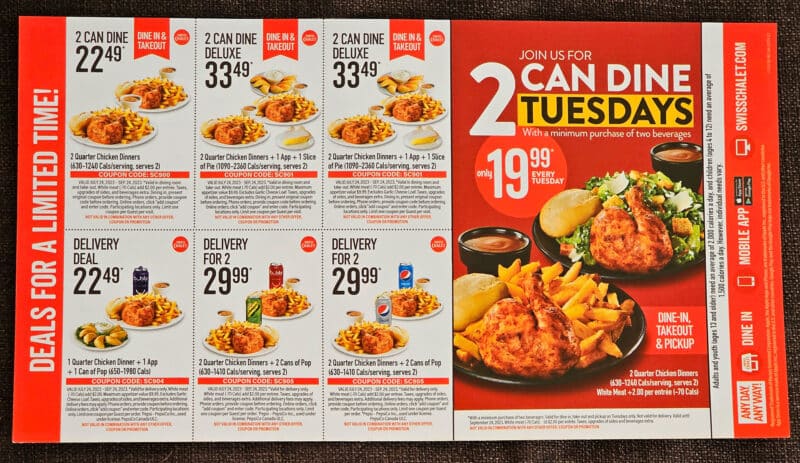Direct Response Marketing persuades and directs customers to take an action directly after seeing the ad.
Effective executives and business owners do not invest in advertising for fun or to make their business seem “cool.” They expect an increase in revenue.
Increasing sales means that their customers have to take action: go to the store, open the app, or checkout on the website. And direct response marketing is designed to prompt behaviors.
The “direct response” in direct response marketing is an action taken directly after seeing the marketing piece.
My name is Colin Finkle, and I have worked in marketing for over 15 years. My passion is branding, which is at odds with direct response marketing (we’ll talk about that later), but I do respect that an effective piece of marketing always includes a call to action.

Definition of Direct Response Marketing
What do people mean when they refer to direct response marketing?
Direct response marketing designs ads and promotions to elicit immediate responses from potential customers with specific calls to action.
Direct response marketing is not brand marketing or product marketing. Brand marketing aims to connect the customer to the brand, and product marketing makes potential customers aware of a product or service and educates them on their benefits. These marketing strategies encourage sales but do not directly solicit them as direct response marketing does.
Example of Direct Response Marketing
An Indian restaurant’s digital ad campaign with a coupon for a Family Meal Bundle.
For an example of direct response marketing, a local Indian restaurant runs direct response ads on the website Skip The Dishes with the copy: “Spicy Summer Special! Order tonight and receive 20% off our Family Meal Bundle. Coupon Code BH45X4.” Over a week, the ad reaches 1638 people, and 74 people order using the coupon code.
The effectiveness of a direct response marketing piece is easy to define and measure. A successful piece of direct response marketing will have a large portion of people that take immediate action (purchase, sign-up, donate, etc.) after seeing it.
You can calculate the percentage of conversions by measuring the number of people exposed to a direct marketing ad and the number of people who took action. This percentage is a measure of the effectiveness of the piece of marketing, and marketers can compare campaigns and only continue funding the best ones.
In our example, 1638 people saw the Indian restaurant ad, and 74 of them ordered using the coupon code. Therefore the conversion rate is 4.52%.
74 / 1638 x 100 = 4.52
The return on investment of direct response marketing pieces is also easy to evaluate. All you need to know is the amount of money spent on the campaign versus the profit of the profit from the goods sold.
If the action being solicited does not have a sale or a profit value, then decision-makers need to define the value of that action in dollars. For example, let’s say the benefactors of some community organizers value each signature on their petition at $0.80, so they would pay $800 for a promotion that generates 1000 signatures on the petition.
To extend our Indian restaurant example, the restaurant spent $679.65 to copywrite, design, and display an advertisement on Skip The Dishes, and they made $1665.15 in profit on the 74 family bundles they sold. Therefore, the campaign made the company $985.50; their ad’s return on investment was 145%.
Call to Action: The crucial element of Direct Response Marketing.
A call to action is a directive and persuasive statement or visible element that motivates the audience to take a specific action. It can be visual, such as a button on a website, or verbal / textual, such as a spokesperson saying: “Talk to one of our representatives today.
A call to action aims to motivate an individual to take a desired action that will ultimately benefit the business or organization. By diligently using a call to action in every marketing piece, businesses and organizations can increase engagement, generate leads, and drive conversions.
Examples of calls to action include:
- Buy Now
- Become a Member
- Sign up for our newsletter today!
- Use this coupon code before the end of the month.
- Subscribe to our YouTube channel.
- Hit the bell icon.
- Call Now!
- Follow us on social media for updates and promotions.
- What do you think? Comment below.
- Visit our website to learn more about our products/services.
- Take advantage of our limited-time offer.
- Book your appointment online today.

Effective calls to action are short, clear on the next step, time-limited, and imply that the viewer will miss out on something they value if they don’t act promptly.
A call to action is often used at the end of an advertisement or marketing message to ensure the audience knows what to do next. Effective calls to action are specific and use action-oriented language to give the audience a sense of urgency.
A call to action differentiates a piece of direct response marketing from other marketing types, such as brand and product marketing.
Benefits
The benefits of direct response marketing come from its measurability, cost-effectiveness, and direct impact on revenue.
Increased sales
Direct response marketing allows businesses to connect directly with potential customers and motivate them to take action, resulting in increased sales.
Measurable results
Direct response marketing campaigns can be tracked and measured using key metrics, allowing businesses to make data-driven decisions and optimize their marketing strategies.
Cost-effective
Compared to traditional mass marketing techniques, direct response marketing has a high return on investment.
Immediate feedback
Direct response marketing allows businesses to receive immediate feedback from their advertising; it works or doesn’t. Talented marketers quickly learn the most effective types of discounts, calls to action, and target markets.
Flexibility
This type of marketing allows businesses to quickly adjust their strategies and messaging based on the effectiveness of the advertising.
Downsides
Direct response marketing can be pushy and intrusive for the customer and train them to look for discounts. The profitability of direct response ads varies wildly and can push into illegal territory for privacy and anti-spam laws.
Customers don’t like them.
Direct response marketing can be overwhelming for consumers. They rely on being intrusive to the customer’s experience. Customers feel direct response ads are “pushy” and “manipulative.”
High costs at certain times
Direct response ads only make sense if the cost of impressions or clicks is well below the profit of the promotion. The ads can cost more than they earn if advertising prices go up. Prices can vary quickly on ad marketplaces like Google Ads or Meta for Business (i.e., Facebook Ads), which can cut profits or make direct response ads unprofitable.
Damaging your brand to get the sale
If direct response marketing is not done correctly, it can lead to a negative reputation for the brand. This can be due to consumers feeling spammed or pushed into sales they later regret. They may never come back to the brand.
Training customers to look for discounts
Direct response marketing can train customers only to buy products from your brand when they are discounted. Direct response ads often use time-restricted discounts (e.g., “Buy today and get 33% off”) to prompt action. With enough of this, customers will refuse to buy that brand’s products at full price and wait for the discount.
Legal risks
Direct response marketing strategies push right up to the line between legal and illegal, given anti-spam, privacy, and data retention laws. You need to be careful and understand the laws of the jurisdictions where your customers are to keep your company from getting sanctioned, charged, or sued.
Conclusion
Direct response marketing has it’s place in an effective marketing mix, but can have negative long term consequences if overused.
In conclusion, direct response marketing is a powerful tool to help businesses achieve their business goals quickly. By using compelling messages and offers, companies, governments, and non-profits can prompt their audience to take action and buy, sign up, or take another action.
With careful planning and execution, direct response marketing can be a highly effective way to drive sales, build brand awareness, and ultimately grow your business. But direct response marketing can damage the future viability of the brand or increase legal liability when it is overused, haphazardly implemented, or too aggressive.
Direct response marketing should be a part of a marketing mix that also includes brand marketing and product marketing.

Leave a Reply